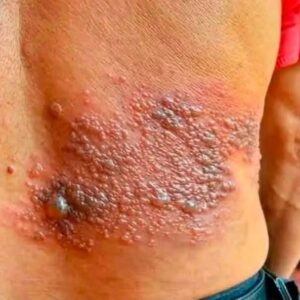Skin changes such as new moles, dark spots, or scaly patches can often cause concern, especially when they appear unexpectedly.
While many skin marks are harmless, some can indicate skin cancer, a condition that affects millions globally each year. Understanding what to look for and how to monitor your skin can be life-saving, particularly when it comes to identifying melanoma, the most aggressive form of skin cancer.According to the World Health Organization, over 1.5 million new cases of skin cancer are diagnosed globally each year. Fortunately, early detection and treatment significantly improve survival rates, especially when cancers are identified in their early stages.
Why Early Detection of Skin Cancer Is Critical
Early diagnosis saves lives. This is especially true for melanoma, which can quickly spread to other organs if left untreated. The American Academy of Dermatology (AAD) recommends regular self-exams as a crucial method for identifying suspicious skin changes before they become more serious.
There is no single visual feature that defines all skin cancers, but there are patterns to be aware of. By becoming familiar with the natural appearance of your skin and regularly checking for changes in moles, freckles, and other skin features, you can increase your chances of catching warning signs early.

Three Common Types of Skin Cancer
There are several types of skin cancer, but the three most commonly diagnosed are:
- Basal Cell Carcinoma (BCC)
- Squamous Cell Carcinoma (SCC)
- Melanoma
Each presents with unique characteristics. Let’s break down what to look for and when to see a healthcare professional.
1. Basal Cell Carcinoma (BCC)
Basal cell carcinoma is the most commonly diagnosed form of skin cancer. According to the Cancer Council Australia, BCCs account for about 70% of non-melanoma skin cancers.
Common Features:
- Appears most often on sun-exposed areas: face, ears, neck, and shoulders.
- Often looks like a pearly or translucent bump, sometimes with visible blood vessels.
- Can also present as a flat, scaly patch or a sore that won’t heal or keeps returning.
- May bleed, crust, or appear shiny and raised.
Important: While BCC is slow-growing and rarely spreads, delayed treatment can lead to local tissue damage. Always consult a healthcare provider if you notice a suspicious lesion.

2. Squamous Cell Carcinoma (SCC)
Squamous cell carcinoma is the second most common type of skin cancer. It accounts for about 30% of non-melanoma skin cancers and can grow quickly compared to BCC.
Common Features:
- Most often develops on sun-exposed areas such as the face, scalp, ears, and hands.
- Presents as a thick, scaly, or crusty lesion, or a rapidly growing red nodule.
- May bleed, itch, or become tender to the touch.
- Can spread to nearby tissues or lymph nodes if left untreated.
SCC is more likely to affect individuals over 50 and those with fair skin. According to the CDC, prompt diagnosis and treatment offer excellent outcomes.
3. Melanoma
Melanoma is less common than BCC or SCC but is significantly more dangerous due to its high risk of spreading to other parts of the body.
Key Warning Signs:
- May appear as a new mole or a change in an existing mole.
- Often has irregular borders, asymmetry, and multiple colors (brown, black, blue, red, or white).
- Can develop on any area of the body, including areas not frequently exposed to sunlight.
- Can be flat or raised, and sometimes feels itchy or bleeds.
The ABCDE Rule for Spotting Melanoma:
According to the American Cancer Society, use the ABCDE method to assess moles or marks:
- Asymmetry – One half is unlike the other half.
- Border – Edges are irregular, ragged, or blurred.
- Color – Varies in color (shades of tan, brown, black, red, white, or blue).
- Diameter – Larger than 6mm (about the size of a pencil eraser), though melanomas can be smaller.
- Evolving – Any change in size, shape, or color.
If you notice any of these signs, contact a dermatologist immediately.

Nodular Melanoma: A Rapidly Growing Threat
One subtype to be aware of is nodular melanoma, a fast-growing form that is particularly aggressive. It tends to:
- Appear as a dome-shaped lesion, often dark in color (but not always).
- Grow quickly over weeks or months.
- Be firm and may bleed or ulcerate.
Nodular melanoma accounts for about 15% of all melanomas and is more likely to be diagnosed at a later stage due to its rapid development, according to the Melanoma Research Foundation.





